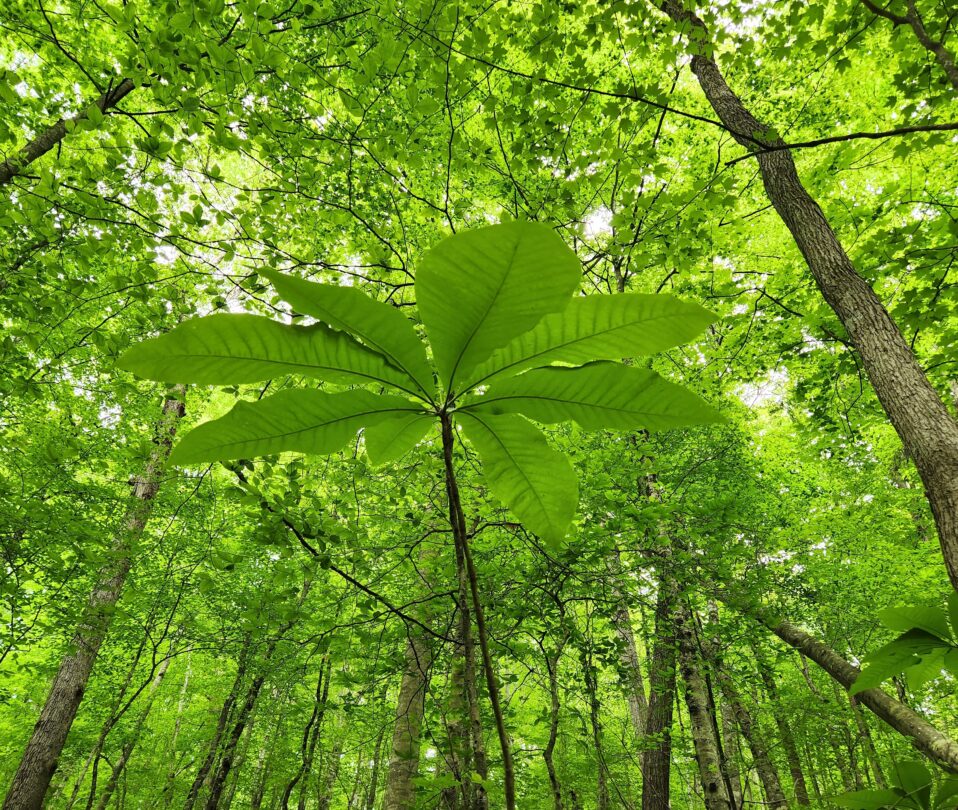Long before flowering plants filled the world with color, magnolias were already blooming. With fossil records dating back over 95 million years, magnolias are among the oldest flowering plants on Earth—true survivors of deep time, with thick, leathery petals built for endurance.
In the forests of Appalachia, these ancient trees still thrive. The southern Appalachian Mountains—rich with misty ridges and biodiverse hollows—are home to native magnolia species like the cucumber tree (Magnolia acuminata), sweetbay (Magnolia virginiana), and umbrella magnolia (Magnolia tripetala). These aren’t the manicured magnolias of Southern gardens; they’re wild, often scraggly, and deeply rooted in the region’s ecological story.
Nature’s Time Travelers
Primitive magnolias evolved long before bees existed. Instead, their main pollinators were beetles—especially early groups like sap beetles and scarabs. These tough, clumsy insects chewed their way through the magnolias’ blossoms, so the trees developed thick, waxy petals to withstand the damage. This ancient relationship, known as cantharophily (beetle pollination), is one of the earliest examples of plant-insect interaction and continues today in the Appalachian woods.
These trees flourish in moist, shaded coves and along mountain streams, growing alongside rhododendrons, ferns, and hemlocks—linking today’s forests to ecosystems millions of years old.
Deep Roots in Culture
For generations, Appalachian communities have lived quietly among these trees, often unaware of their prehistoric lineage. Their blooms signaled the changing seasons; their bark and leaves were sometimes used in folk medicine. Their presence, while humble, speaks to a long continuity of life in these hills.
Today, primitive magnolias remind us not only of the beauty of Appalachia but also of the planet’s ancient rhythms. In a fast-changing world, they are living relics—proof that endurance, adaptation, and quiet strength are their own kind of wonder.
Where to See Primitive Magnolias in Cocke County, TN
If you’re in Cocke County and eager to witness these ancient trees, consider visiting Martha Sundquist State Forest, located near Hartford. This state forest is known for its mature mountain and cove hardwood stands, and magnolias are among the diverse tree species found there. The forest offers hiking opportunities and a chance to immerse yourself in the natural beauty of the region.
Another excellent spot is Albright Grove, a virgin cove hardwood forest located about 15 miles outside of Gatlinburg. This area is renowned for its ancient trees, including yellow poplars, and offers a glimpse into the rich biodiversity of the Smoky Mountains.
Whether you’re a local or a visitor, these locations provide a unique opportunity to connect with the ancient beauty of primitive magnolias and the rich natural heritage of Cocke County.










